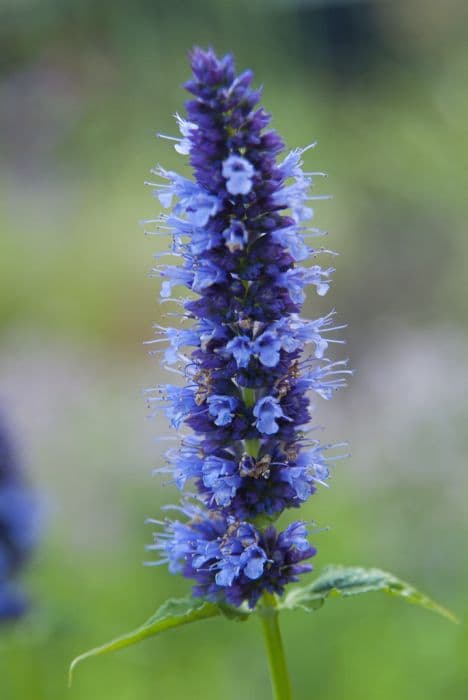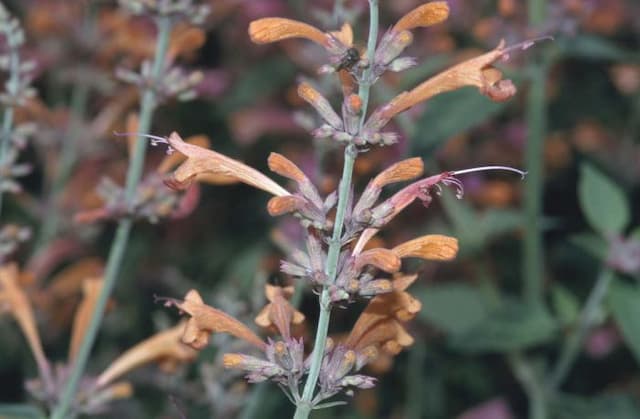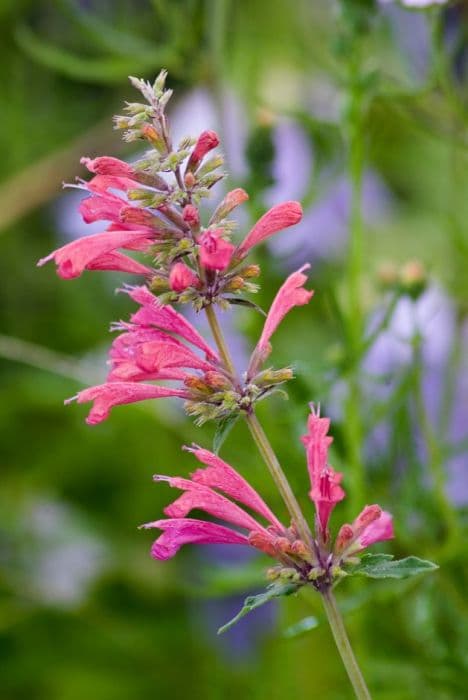Golden Lemon Thyme Thymus serpyllum 'Goldstream' (v)

ABOUT
Thymus serpyllum 'Goldstream', commonly known as creeping thyme, is a perennial herb with a dense, mat-forming habit. Its foliage is characterized by small, oval to needle-shaped leaves that are a vibrant green with a luscious gold variegation around the edges, giving the plant its distinctive 'Goldstream' appearance. During the blooming season, the creeping thyme produces a profusion of tiny, tubular flowers that range in color from pink to purple, which stand out against the golden-edged green leaves, attracting pollinators like bees and butterflies. The plant is also known for its delightful fragrance, which is released when the leaves are crushed or brushed against, adding another layer of sensory appeal to gardens or landscapes where it is used as ground cover or in rockeries.
About this plant
 Names
NamesFamily
Lamiaceae
Synonyms
Creeping Thyme, Wild Thyme, Breckland Thyme, Mother-of-Thyme, Goldstream Thyme
Common names
Thymus serpyllum 'Goldstream' (v)
 Toxicity
ToxicityTo humans
Goldstream thyme (Thymus serpyllum 'Goldstream') is not known to be toxic to humans. It is commonly used as a culinary herb and has medicinal properties. However, as with any plant, individual allergies or reactions can occur, and it is always advisable to be cautious when trying a new plant for the first time.
To pets
Goldstream thyme (Thymus serpyllum 'Goldstream') is generally considered non-toxic to cats and dogs. It is often used as a safe, aromatic ground cover in gardens where pets may roam. If a pet ingests a large amount of any plant, including Goldstream thyme, gastrointestinal upset could potentially occur, but this is not common.
 Characteristics
CharacteristicsLife cycle
Perennials
Foliage type
Evergreen
Color of leaves
Green
Flower color
Pink
Height
6 inches (15 cm)
Spread
18 inches (45 cm)
Plant type
Herb
Hardiness zones
4
Native area
Europe
Benefits
 General Benefits
General Benefits- Attracts Pollinators: Thymus serpyllum 'Goldstream' is known to attract bees, butterflies, and other beneficial insects that help in the pollination of nearby plants.
- Aesthetic Appeal: The plant has vibrant green-gold foliage that provides visual interest and contrast in garden designs or when used as ground cover.
- Drought Resistance: Once established, it is drought-tolerant, making it suitable for xeriscaping and reducing the need for frequent watering.
- Culinary Use: The leaves of the plant are aromatic and can be used to flavor various dishes, although it is primarily ornamental.
- Low Maintenance: It requires minimal care once established and can thrive in poor soil conditions without the need for regular fertilization.
- Erosion Control: Its mat-forming growth habit helps stabilize soil and can prevent erosion on slopes or in areas prone to soil degradation.
- Creeping Habit: This trait makes it an excellent ground cover that can fill in spaces and cover large areas with its dense foliage.
- Herb Garden Addition: It can be included in herb gardens for its ornamental value and potential use in cooking.
- Wildlife Habitat: The dense foliage can provide cover and nesting sites for small wildlife, enhancing biodiversity in the garden.
- Aromatic Foliage: When brushed or crushed, the leaves emit a pleasant scent, contributing to the sensory garden experience.
 Medical Properties
Medical Properties- Antiseptic: The essential oil of Thymus serpyllum, commonly known as wild thyme, has antiseptic properties that have been utilized in mouthwashes and medicinal preparations.
 Air-purifying Qualities
Air-purifying QualitiesThis plant is not specifically known for air purifying qualities.
 Other Uses
Other Uses- Lawn Alternative: Creeping thyme 'Goldstream' can be used as a drought-resistant ground cover that tolerates foot traffic and can serve as a low-maintenance lawn substitute.
- Erosion Control: This plant is effective in preventing soil erosion on slopes and banks due to its mat-forming growth habit.
- Between Paving Stones: Creeping thyme 'Goldstream' can be planted between paving stones or stepping stones, where it will release a pleasant fragrance when stepped on.
- Culinary Garnish: The ornamental leaves and flowers can be used as an edible garnish for dishes, adding both aesthetic appeal and a mild thyme flavor.
- Fairy Gardens: Due to its miniature size and dense growth, it's perfect for creating whimsical fairy gardens.
- Bee and Butterfly Attraction: Creeping thyme 'Goldstream' produces flowers that are attractive to bees and butterflies, making it ideal for pollinator gardens.
- Natural Path Edging: It can be utilized to create natural edges along garden paths, softening the look of the hardscape.
- Aromatic Sachets: Dried leaves and flowers of creeping thyme 'Goldstream' can be used to fill sachets, providing a fresh, herbal aroma to drawers and closets.
- Decorative Pots and Containers: The plant can spill attractively over the sides of pots and containers, adding depth to plant arrangements.
- Living Mulch: It can be used as living mulch under taller plants, helping to suppress weeds and retain soil moisture.
Interesting Facts
 Feng Shui
Feng ShuiCreeping Thyme is not used in Feng Shui practice.
 Zodiac Sign Compitability
Zodiac Sign CompitabilityCreeping Thyme is not used in astrology practice.
 Plant Symbolism
Plant Symbolism- Courage: Thymus serpyllum, known as wild thyme, has been associated with courage. In ancient times, knights would often carry sprigs of thyme as a sign of bravery.
- Strength: Wild thyme symbolizes strength and endurance, possibly due to its ability to thrive in tough conditions and rocky soils.
- Healing: Historically, wild thyme was used for its medicinal properties, making it a symbol of healing and restorative powers.
- Cleanliness: In some cultures, wild thyme represents cleanliness and was used to purify spaces, likely due to its antiseptic properties.
- Passing of Time: As the name suggests, thyme is associated with the passage of time, which could be a reference to its perennial nature and long-lasting aroma.
 Water
WaterCreeping thyme should be watered deeply but infrequently, allowing the soil to dry out between waterings. When the top inch of soil feels dry to the touch, it's time to water again, which might be approximately once a week during active growth seasons, depending on the climate and weather conditions. It is best to use approximately one gallon of water per square yard every week during the summer months, adjusting as necessary for rainfall and temperature conditions. Over-watering can lead to root rot, so ensure good drainage. In winter, reduce watering since the plant's water requirements decrease.
 Light
LightCreeping thyme thrives in full sun conditions, which means it should receive at least six hours of direct sunlight each day. The ideal spot for this plant is in an area where it can bask in the unobstructed light of the sun, as this promotes the best growth and flowering. If grown indoors, a south-facing window is often a suitable location for enough sunlight exposure.
 Temperature
TemperatureCreeping thyme prefers a temperate climate and grows best when daytime temperatures are between 60 to 70 degrees Fahrenheit. This plant can tolerate a range from just above freezing to around 80 degrees Fahrenheit. However, it is not well-suited for extreme heat or prolonged periods of frost, and it may require protection when temperatures start going below 40 degrees Fahrenheit.
 Pruning
PruningPruning creeping thyme is necessary to maintain its compact growth habit and to encourage thick, lush foliage. Light trimming can be done after the plant has flowered, usually in late spring or early summer, to remove the spent blooms and shape the plant. Pruning can be done annually or as needed to remove any dead or spindly growth, keeping the thyme healthy and attractive.
 Cleaning
CleaningAs needed
 Soil
SoilCreeping Thyme 'Goldstream' prefers well-draining soil with a pH ranging from 6.0 to 8.0. A soil mix consisting of equal parts loam, sand, and peat or compost to enhance drainage works best for this plant.
 Repotting
RepottingCreeping Thyme 'Goldstream' should be repotted every 2 to 3 years or when it outgrows its current container to prevent root-bound conditions and encourage healthy growth.
 Humidity & Misting
Humidity & MistingCreeping Thyme 'Goldstream' tolerates a wide range of humidity levels but thrives best in moderate to low humidity conditions typical of outdoor environments.
 Suitable locations
Suitable locationsIndoor
Provide full light, well-drained soil, and minimal water.
Outdoor
Plant in full sun, well-draining soil; water sparingly.
Hardiness zone
4-9 USDA
 Life cycle
Life cycleThymus serpyllum 'Goldstream', commonly known as Golden Creeping Thyme, starts its life as a seed that germinates in warm, moist soil conditions typically in the spring. Upon sprouting, the seedling begins to establish a root system and grows into a mat-forming perennial, spreading out with stems that root down at the nodes. The plant enters a vegetative state where it focuses on leaf growth; its small, rounded, gold-tinged leaves emerge and it develops into a dense ground cover. During the summer, Golden Creeping Thyme blooms, producing small purplish-pink flowers that attract pollinators. After flowering, the plant sets seed which can be dispersed by wind or wildlife, thereby enabling the possibility of new plants growing the following season. As a hardy perennial, Golden Creeping Thyme enters a period of dormancy during the winter months, conserving energy to regrow in the spring.
 Propogation
PropogationPropogation time
Spring to early summer
Thymus serpyllum 'Goldstream', commonly known as creeping thyme or wild thyme, is most popularly propagated through stem cuttings. The best time to take cuttings is in the late spring or early summer when the plant's growth is most vigorous. To propagate by cuttings, select a healthy, non-flowering stem and cut a 2 to 4 inch (5 to 10 cm) piece. Strip the leaves from the lower half of the cutting and dip the cut end into rooting hormone powder to encourage root development. Plant the cutting in a well-draining soil mix, ensuring that the leafless part is buried. Keep the soil consistently moist but not waterlogged, and within a few weeks, the cutting should root and can be transplanted to a permanent location.






![Bugle [Sugar Plum]](/_next/image?url=https%3A%2F%2Fplants-admin.emdemapps.com%2Fimages%2Fplants%2F%2Fimages%2F604b597956a55.png&w=640&q=75)
![Bugle [Princess Nadia]](/_next/image?url=https%3A%2F%2Fplants-admin.emdemapps.com%2Fimages%2Fplants%2F%2Fimages%2F604b5806e268c.png&w=640&q=75)

